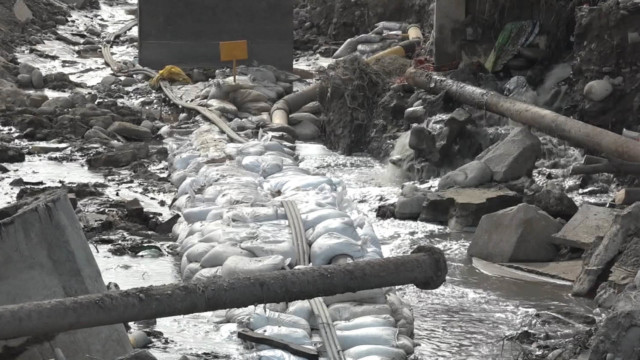More than 100 people were killed and some 6,000 kilometers of road were left unusable following Peru’s devastating floods. Government officials say nearly one million people were impacted, among thousands left homeless.
CGTN’s Dan Collyns reports.

It was the image of Peru’s floods that went around the world. Amid the debris of an immense mudslide a woman emerges. She’s alive. Evangelina Chamorro was dragged three kilometers from her farm. Two months later she is starting anew with her husband Armando in a donated pre-fabricated home. “I felt bad somehow to see myself on the news, all I could do was overcome the experience and try to start again with my daughters,” Chamorro said.
Chamorro has become a symbol of courage in Peru after her miraculous survival. Like many Peruvians she did not know that where she lived was dangerous. “There are traffickers who sell land without explaining if its dangerous or not. They should also share the blame for why we’re living in these places where no one should live,” the landslide survivor said.
The portable home is insulated, earthquake-proof and only needs a plot of land on which to stand. Everyone at a nearby modular construction firm Tecnofast worked overtime so she could have the new home free of charge, says the company’s president Rafael Fernandez Stoll. “She needs a lot of human support and help to build a new life for her and for her family. She’s a heroine for us,” he said.
The pre-fabricated homes won’t replace bricks and mortar but they are more resistant to natural disasters than many of the constructions which were swept away by the floods and landslides. They could be a welcome temporary solution for the many thousands left homeless. Peru’s President Pedro Pablo Kuczynski says the reconstruction could cost up to $12 billion over the next five years and could trim projected GDP growth this year to three percent.
As Peru rebuilds, construction firms are lining up to tender bids. But this time, the construction must be different, says the country’s president: “We must rebuild but we must do it much better than before; no more roads which collapse, no more drains which get blocked, no more precarious buildings on dangerous floodplains. We have to change.”
Flood-hit Peruvians are counting the cost of corruption on top of the natural disaster. Residents in Olmos, a town in the north of the country, say they haven’t seen their mayor in a week. They accuse him of hoarding donations. “We don’t’ know what he’s done with the donations,” local anti-corruption coordinator Patricia Linares told CGTN. “We just found a storeroom full of mattresses and other materials which shouldn’t be there but in the hamlets hit by the floods.”
Peruvians are demanding a change from the old ways which left Evangelina Chamorro and thousands more at the mercy of nature. If done right, this crisis could be an opportunity to change Peru for the better.
 CGTN America
CGTN America

